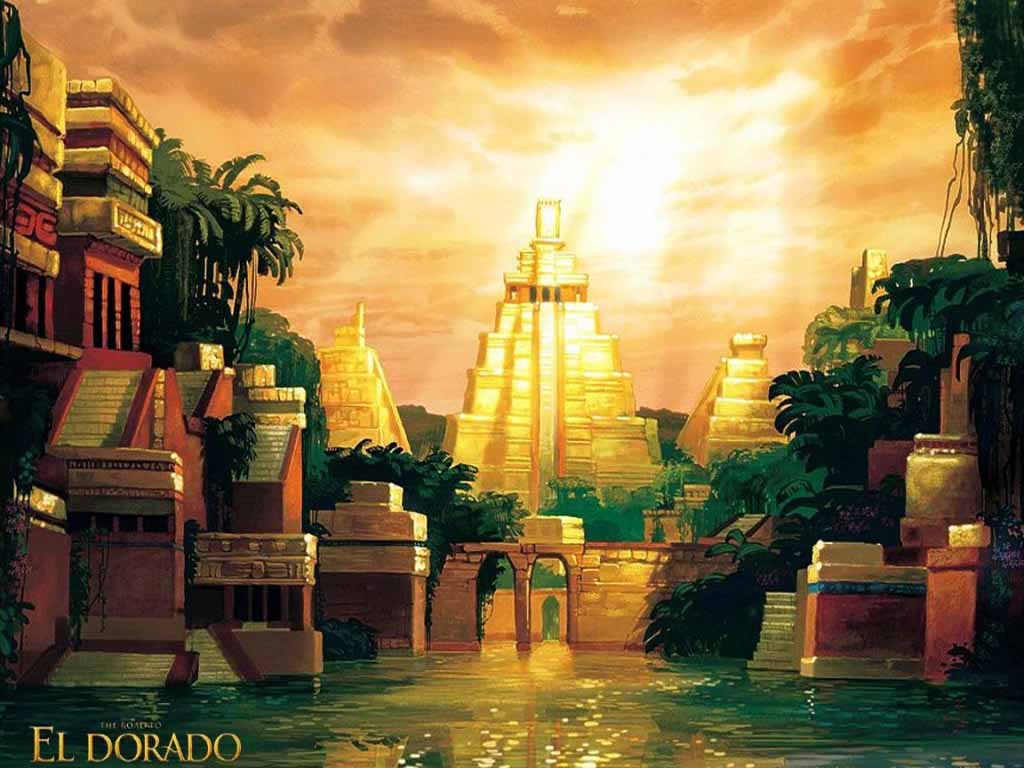Reading David Grann's book
The Lost City of Z made me curious about the history of the Amazon. Here's a bit about the legend that launched countless European expeditions into the jungle.
Finding the lost cityDoes the Amazon jungle conceal a vanished empire?
By David GrannEver since the Spanish conquistadores descended the Amazon River, in 1542, perhaps no region on the planet had so ignited the imagination--or lured so many men to their death. For centuries, the conquistadores had searched the jungle for the glittering kingdom of El Dorado. The kingdom, which the conquistadores had heard about from Indians, was said to be so plentiful in gold that its inhabitants ground the metal into powder and blew it through "hollow canes upon their naked bodies." (El Dorado literally means the Gilded Man.) Thousands had died looking for this golden realm.Google Earth helps find El DoradoFor nearly 500 years, explorers have hunted in vain for a lost city—now with Google Earth, it may have been found
By Ed CaesarThe dream of finding lost civilisations in South America has persisted for centuries, largely because of a couple of earth-shattering early successes. As John Hemming, a former director of the Royal Geographical Society, recounts in his 1978 book, The Search For El Dorado, it was the conquistadors who started the craze. In 1519 Hernan Cortes and his soldiers discovered the Aztec city of Tenochtitlan, in Mexico. In the early 1530s, Francisco Pizarro conquered the Incan empire, in what is now Peru. The idea of a “golden city” somewhere deeper in the unexplored wilds was lodged in the European imagination and never released its hold.
Grann notes that in 1753 a Portuguese bandeirante—a soldier of fortune—emerged from the Amazon jungle and described how, “after a long and troublesome peregrination, incited by the insatiable greed of gold,” he had seen the ruins of an ancient city from a mountain top. The man walked into the city, discovering “stone arches, a statue, wide roads and a temple with hieroglyphics.” The bandeirante wrote: “The ruins well showed the size and grandeur which must have been there and how populous and opulent it had been in the age in which it flourished.”What the early explorers actually found:
Dispatch #15: The Decimation of the Amazon IndiansBy Alex ShoumatoffThe first Europeans to penetrate the Amazon basin was a Spanish expedition led by Francisco de Orellana in 1542. Hoping to find the fabled lands of El Dorado and La Canela, Orellana and his men set out from Quito, Ecuador, and descended the Napo River to its confluence with the Solimões, the Amazon’s upper section, and continued down the river for 1500 miles to where it pours into the Atlantic. At that time, several million people were living in the Amazon Valley. They belonged to some two hundred tribes and ethnic groups in four linguistic families—Gê, Tupi, Carib, and Arawak. Starting with the Omagua, an intelligent, orderly people of the Solimões, who farmed river turtles and wore cotton robes, the expedition passed one prosperous community after another along the banks of the river. So rich were the resources of the várzea, or floodplain, that some of the close-packed lines of houses went on without interruption for days, and the level of civilization of some of the riverine tribes was on a par with the Incas’, although the materials they built and worked with were perishable, and few artifacts, besides their extraordinarily refined ceramics, survive.And what it all means:
Q&A with David Grann, author of The Lost City of ZBy Mark MedleyWhat is it about these lost societies--El Dorado, Atlantis--that intrigue us?
The fascination with lost cities seems eternal. I suspect that part of it, like the earlier searches for mythical kingdoms, such as Prester John, reflects a longing to find some place that is better or richer or more fabulous than the one we inhabit. In 1928, after tens of thousands of people volunteered to search for Fawcett and his missing party, an American newspaper marveled, "Perhaps if there were a sufficient number of jungles available and enough expeditions to go round, we would see the spectacle of our whole population marching off in search of lost explorers, ancient civilizations, and something which it vaguely felt was missing in its life." I also think there is a deep curiosity about how real civilizations, such as the Incas or Mayans, once flourished and eventually died out. Some of this interest is practical: What did these people accomplish that might help us navigate our way? And some of the fascination is simply wonder at how others lived in different places and ages.Comment: The legend of El Dorado continues to influence us--and not in a good way. It's the inspiration for many racist or stereotypical movies: from
The Road to El Dorado to
National Treasure: Book of Secrets to
Indiana Jones and the Kingdom of the Crystal Skull.
The common theme is that Indians used to be smart and civilized, but now they're stupid and savage. A related belief is that they couldn't have been that intelligent so they must've had the help of "ancient astronauts."
For more on the Amazon Indians' reality, see
Amazon Indians Weren't Savages and
Amazon Towns Disprove Stereotypes.



No comments:
Post a Comment